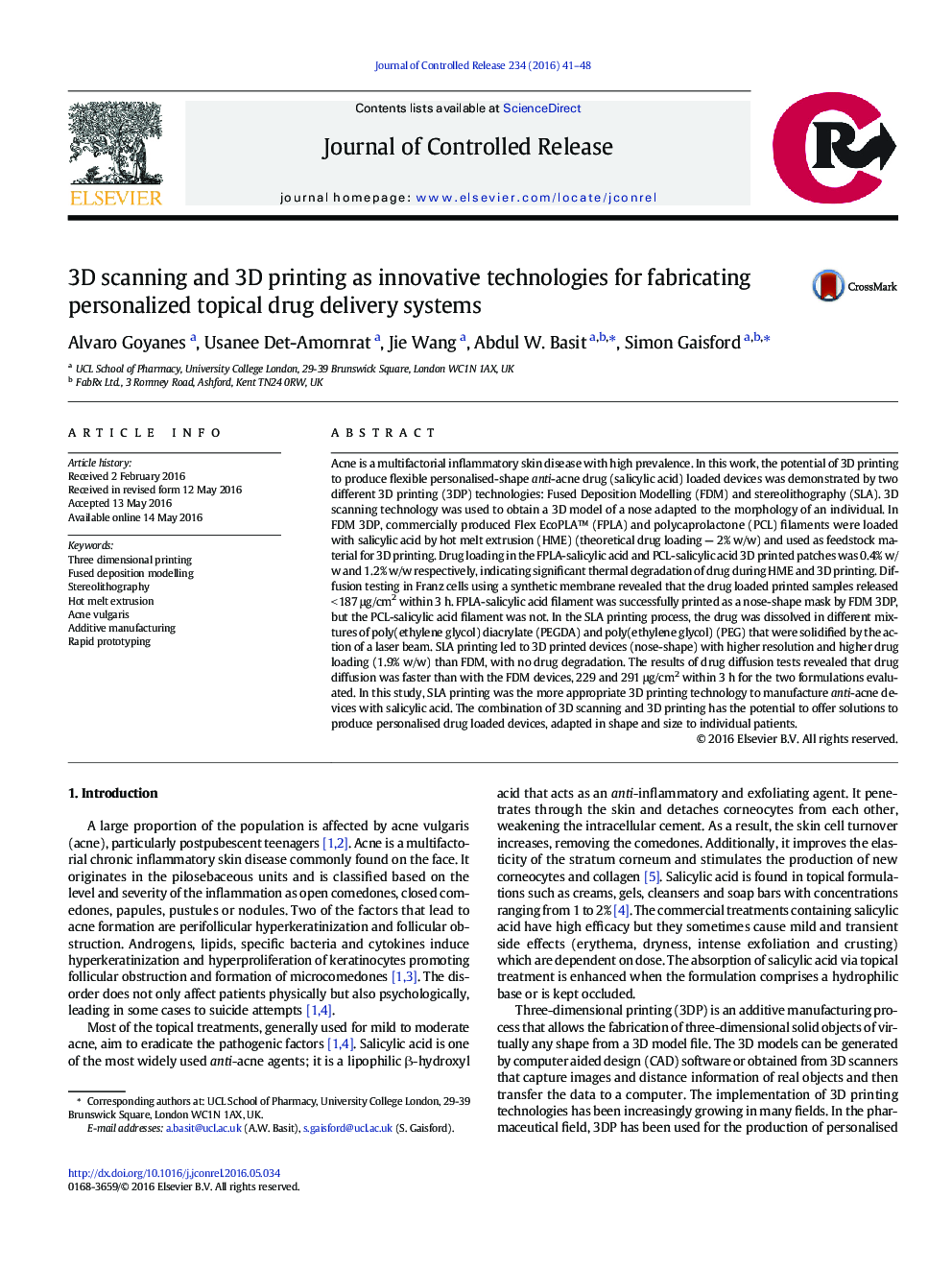| کد مقاله | کد نشریه | سال انتشار | مقاله انگلیسی | نسخه تمام متن |
|---|---|---|---|---|
| 1423507 | 1509015 | 2016 | 8 صفحه PDF | دانلود رایگان |

Acne is a multifactorial inflammatory skin disease with high prevalence. In this work, the potential of 3D printing to produce flexible personalised-shape anti-acne drug (salicylic acid) loaded devices was demonstrated by two different 3D printing (3DP) technologies: Fused Deposition Modelling (FDM) and stereolithography (SLA). 3D scanning technology was used to obtain a 3D model of a nose adapted to the morphology of an individual. In FDM 3DP, commercially produced Flex EcoPLA™ (FPLA) and polycaprolactone (PCL) filaments were loaded with salicylic acid by hot melt extrusion (HME) (theoretical drug loading — 2% w/w) and used as feedstock material for 3D printing. Drug loading in the FPLA-salicylic acid and PCL-salicylic acid 3D printed patches was 0.4% w/w and 1.2% w/w respectively, indicating significant thermal degradation of drug during HME and 3D printing. Diffusion testing in Franz cells using a synthetic membrane revealed that the drug loaded printed samples released < 187 μg/cm2 within 3 h. FPLA-salicylic acid filament was successfully printed as a nose-shape mask by FDM 3DP, but the PCL-salicylic acid filament was not. In the SLA printing process, the drug was dissolved in different mixtures of poly(ethylene glycol) diacrylate (PEGDA) and poly(ethylene glycol) (PEG) that were solidified by the action of a laser beam. SLA printing led to 3D printed devices (nose-shape) with higher resolution and higher drug loading (1.9% w/w) than FDM, with no drug degradation. The results of drug diffusion tests revealed that drug diffusion was faster than with the FDM devices, 229 and 291 μg/cm2 within 3 h for the two formulations evaluated. In this study, SLA printing was the more appropriate 3D printing technology to manufacture anti-acne devices with salicylic acid. The combination of 3D scanning and 3D printing has the potential to offer solutions to produce personalised drug loaded devices, adapted in shape and size to individual patients.
Figure optionsDownload high-quality image (124 K)Download as PowerPoint slide
Journal: Journal of Controlled Release - Volume 234, 28 July 2016, Pages 41–48